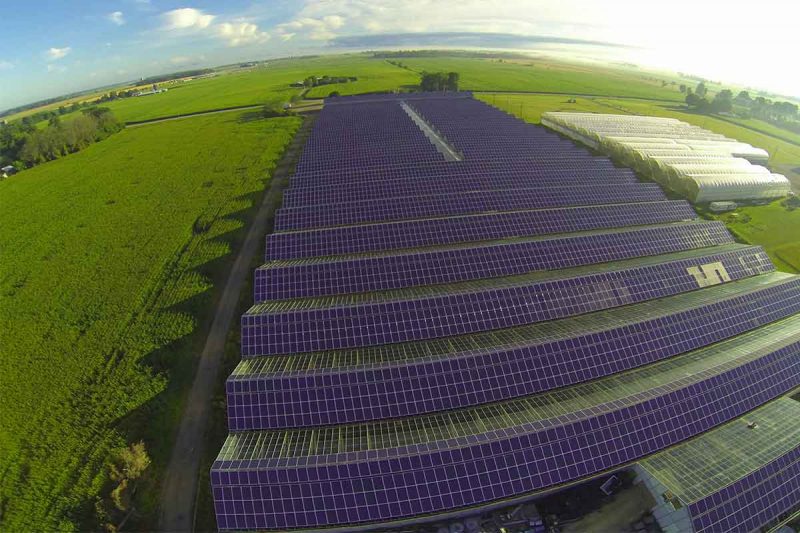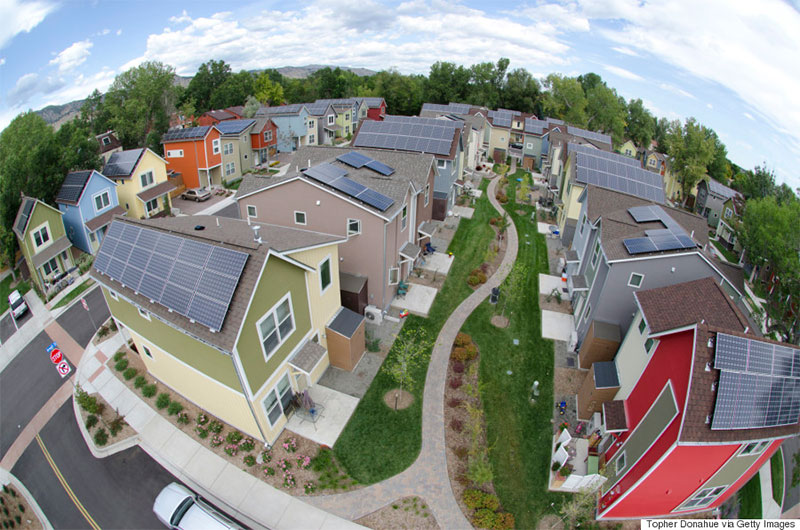Employment in the solar energy sector in Canada has experienced strong growth. In 2013, the estimated labor force in the solar energy industry was 5,925 up from 2,700 jobs in 2009. In the province of Ontario, projections indicate a gain of 6,000 jobs due to a four year FIT procurement target.
The solar photovoltaic module manufacturing industry alone accounted for approximately 1,900 full-time positions in 2013.
These positions covered green color jobs in design and engineering, but also in manufacturing and testing of modules. The Ontario photovoltaic inverter industry accounted for 250 jobs, while the racking industry brought in approximately 700 jobs in that same year.
Some of these figures and data might not be very recent but the point is that Ontario’s contribution helps Canada rank as one of the largest producers and exporters of energy in the world and boasts one of the cleanest electricity systems in the world with 79 percent from non-emitting sources.
All levels of Canadian government are strongly committed to sustainable development and are seeking ways to reduce greenhouse gas (GHG) emissions through renewable energy and other conservation policies. — CanSIA
Status of the solar sector in Canada
Solar photovoltaic capacity in Canada grew at an annual rate of 98 percent in 2011, 48 percent in 2012 and 54 percent in 2013. This growth is largely attributed to the positive atmosphere of incentive programs available in the province of Ontario.

World-Record 2.3 Megawatt Microinverter Solar Installation: Largest rooftop solar in Canada. Credit: Sentinel Solar
Throughout Canada, provincial and territorial government policies support net-metering. This support, coupled with continues decline in balance-of-system costs—makes solar photovoltaic generation almost at grid parity.
Yes, some might argue that the province of Ontario leads in photovoltaic investments due to its populous and sheer size as the second largest province. Ontario’s cumulative installed solar energy photovoltaic capacity was 557 megawatts under the Renewable Energy Standard Offer Program (RESOP), then 884 megawatts under the Feed-in Tariff Program (FIT) and 201 megawatts AC under the microFIT program.
This accounts for 1,642 total megawatt installed capacity as of September 2014. The total amount of installed and under development photovoltaic capacity in Ontario is approximately 2,319 megawatts.
How Ontario’s government and policy are helping
In 2014, the province set a 50 megawatt annual procurement target for microFIT to encourage the development of a prosumer market. The contract prices paid by the microFIT program are reviewed annually to reflect the current costs.
The government is also exploring the option of phasing out the microFIT program, which should be replaced by the net metering program. This, as photovoltaic system cost continues to decrease and more photovoltaic systems are installed across the province.
The Canadian Solar Industry Association (CanSIA) continuously works with the Ontario Ministry of Energy to develop the Ontario Solar PV (photovoltaic) Task force. This task force will work with energy and solar industry stakeholders (electricity distributors, utilities, power producers and energy regulators) to propose recommendations to policy makers and regulators in order to create consistent and simplified solar electricity connection and metering frameworks.
How Ontario is leading in energy storage technologies
Ontario is a leader in development and deployment of energy storage systems technology. Companies like Panasonic Eco Solutions and other innovative companies like Temporal Power with their flywheel technology are setting the stage for an energy storage revolution in the province.
Panasonic eco solutions has partnered with other companies to explore a pilot project in the city of Oshawa, in Ontario. They’re installing 30 combined solar photovoltaic and battery projects, a 6-kilowatt solar system and testing new battery technology that can store up to 10 kilowatt-hours of power.
The province has funded 34 megawatts worth of projects and plans to roll out 50 megawatts worth of energy storage technologies. While this commitment doesn’t stand a chance to beat California’s pledge to install 1,300 megawatts, this still places the province as a leader in Canada and maybe North America.

View of attendance at a Canadian Solar Industry event, Solar Canada Conference and Exposition hosted by The Canadian Solar Industries Association (CanSIA). Photo Credit: CanSIA
A final thought
Ontario has so far dominated the solar photovoltaic energy scene in Canada, despite huge need and potential for the technology in other parts of the country. The province has by far surpassed other provinces in solar-supportive policies and in educating consumers and businesses about its benefits.
“I’ll just tell you how personally excited I am about a future that is literally right around the corner,” John Gorman, the president and CEO of CanSIA told pvbuzz media in an interview. “When you look at Ontario for example, where you’re a homeowner who has solar on their rooftop, a storage battery in your garage, a smart meter on the side of your house, an electric vehicle in the garage, and smart apps on your telephone that allow you to control your appliances, manage your electricity needs in the most cost-effective way and help make the overall electricity system more resilient and better for everybody.”
But the solar policy stability and predictability now settling in Ontario means it’s time to redirect the industry’s gaze outside Ontario’s provincial borders. This shift to open up other markets, Gorman believes, is essential, helping them take advantage of the resources invested and experience harvested in Ontario.
“All the activity has been happening in one province,” he says. “We need to expand to other provinces.”














Comments